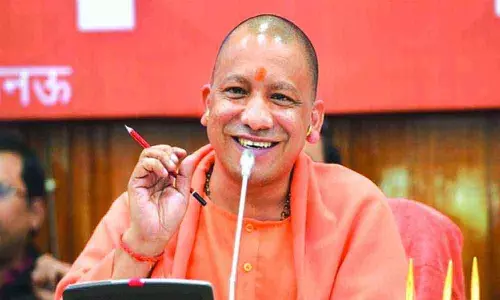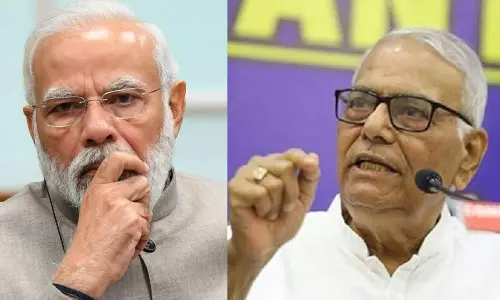
Yogendra Yadav challenges BJP’s hat-trick hype, showing Cong’s 9.5 lakh more votes gain
text_fieldsIn an analysis, political activist and psephologist Yogendra Yadav, founder of Swaraj Abhiyan, has questioned the prevailing narrative of the BJP’s purported unstoppable march towards a third consecutive victory in the upcoming Lok Sabha elections.
Yadav's examination of the recent assembly elections and historical trends paints a nuanced picture that challenges the widely accepted notion of a BJP "hat-trick."
Yadav begins by dissecting the election results declared on December 3, revealing a crucial detail that seems to have been overlooked amidst the celebratory atmosphere.
Contrary to the prevailing sentiment, the Congress secured approximately 9.5 lakh more votes than the BJP across the four states. This revelation prompts Yadav to question the prevailing assumption that the BJP has decimated the Congress, urging a more critical examination of the claims being made.
Delving into the voting percentages in the three Hindi-speaking states the BJP emerged victorious in, Yadav points out that the differences are marginal.
In Rajasthan and Chhattisgarh, the BJP's lead is merely 2% and 4%, respectively, challenging the notion of a sweeping victory. Even in Madhya Pradesh, where the lead is slightly higher at over 8%, the Congress secured over 40% of the votes, indicating a substantial base that could facilitate a comeback.
Yadav emphasizes the importance of looking beyond the immediate election results, citing historical examples to dispel the myth of a direct correlation between assembly and Lok Sabha outcomes.
He recalls instances where parties that lost in state elections rebounded in the subsequent Lok Sabha polls, highlighting the distinctive dynamics at play in the two electoral arenas.
Moving forward, Yadav analyses the power dynamics for the 2024 Lok Sabha elections, asserting that the BJP's reliance on the Hindi belt states doesn't necessarily translate into a nationwide advantage.
He underscores the significance of the INDIA alliance's strategy in states like Karnataka, Maharashtra, Bihar, and West Bengal, which could pose a considerable challenge to the BJP's dominance.
Yadav concludes his analysis by scrutinizing the actual impact of these assembly elections on the Lok Sabha, asserting that the BJP's stronghold in the Hindi belt does not guarantee a similar performance on the national stage.
Yadav employs a hypothetical scenario based on the 2023 assembly election results, demonstrating that the BJP may face a potential loss of 19 seats, while the Congress could gain 22 seats.
He cautions against prematurely declaring a "hat-trick" victory, encouraging political observers to consider the broader electoral landscape and historical patterns before arriving at conclusive judgments.
























